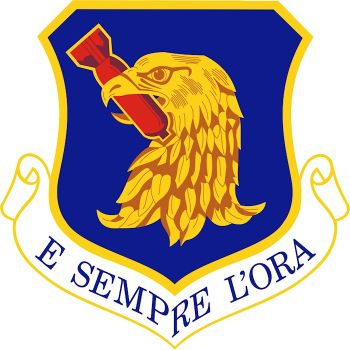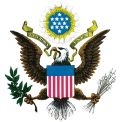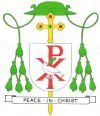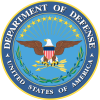96th Test Wing, US Air Force
96TH TEST WING, US AIR FORCE
History: Established as 96 Bombardment Group, Heavy, on 28 January 1942. Activated on 15 July 1942. Inactivated on 21 December 1945. Redesignated as 96 Bombardment Group, Very Heavy, on 13 May 1947. Activated in the Reserve on 29 May 1947. Inactivated on 27 June 1949. Consolidated (31 January 1984) with the 96 Bombardment Wing, Heavy, which was established on 23 March 1953. Redesignated as 96 Bombardment Wing, Medium, on 6 November 1953. Activated on 18 November 1953. Redesignated as: 96 Strategic Aerospace Wing on 1 April 1962; 96 Bombardment Wing, Heavy, on 31 March 1972; 96 Wing on 1 September 1991. Inactivated on 1 October 1993. Redesignated as 96 Air Base Wing on 10 March 1994. Activated on 15 March 1994. Redesignated as 96 Test Wing on 18 July 2012. Activated in July 1942 and manned in early August, the 96 Bombardment Group spent the next six months training with B–17s and as an operational training unit. Entered combat in May 1943 and functioned primarily as a strategic bombardment organization throughout the war. Attacked shipyards, harbors, railroad yards, airdromes, oil refineries, aircraft factories, and other industrial targets in Germany, France, Holland, Belgium, Norway, Poland, Hungary, and Czechoslovakia. Received a Distinguished Unit Citation (DUC) for withstanding severe assault by enemy fighters to bomb the vital aircraft factories at Regensburg on 17 August 1943. Received another DUC for leading components of the 45 Combat Bombardment Wing, Heavy, a great distance through heavy clouds and intense antiaircraft fire to raid important aircraft component factories in Poland on 9 April 1944. In addition to strategic operations, missions included bombing coastal defenses, railway bridges, gun emplacements, and field batteries in the battle area prior to and during the invasion of Normandy in June 1944; attacked enemy positions in support of the breakthrough at St. Lo in July 1944; aided the campaign in France in August by striking roads and road junctions and dropping supplies to French resistance members; and attacked, during the early months of 1945, the transport centers supplying German armies on the western front. After V–E Day, flew food to Holland and redeployed personnel to French Morocco, Ireland, France, and Germany. Briefly active in the Reserve from May 1947-June 1949; conducted routine training activities. Although the wing was established in November 1953, its headquarters and components were not manned until March 1954; the 96 Air Base Group, whose commander served additional duty as wing commander, controlled the few manned units. Began air refueling operations in Mar 1954 and bombardment training in Apr 1955 in support of SAC’s global commitments. Deployed to Guam, Jan–Apr 1957. Controlled a strategic airlift squadron, September 1959–March 1961, and an Atlas missile squadron, July 1961–March 1965. The first Atlas missile went on alert in April 1962. During several months in 1970 and in 1972–1973, all wing aircraft, crews, and most support personnel were loaned to other SAC organizations in the Far East or Southeast Asia for combat operations. From 1980, the wing’s KC–135A aircraft regularly deployed to Europe, Alaska, and the Pacific to support SAC tanker task force requirements. Became the first wing to operate the B–1B, after the arrival of the first aircraft in June 1985. In October 1986, B–1Bs assumed SAC alert duties for the first time. Wing KC–135 tankers provided refueling support to units involved in the invasion of Panama, December 1989. Ferried personnel and equipment to Guam for further movement to Southwest Asia, in August 1990. Single KC–135s provided refueling support throughout Southwest Asia, August 1990–March 1991. Ended bombardment mission and inactivated in October 1993. Provided services and support for the Air Force Development Test Center (later, Air Armament Center) and its tenant organizations, March 1994; assigned to Air Force Test Center in 2012, and absorbed the aircraft resources of another wing.
| English | blazon wanted |
Origin/meaning
The Emblem was approved on 18 February 1943; newest rendition 20 February 2013.
Literature:Image from Wikimedia Commons
US heraldry portal
This page is part of the US heraldry portal |
Heraldry of the World |
|
US heraldry:
|
Ecclesiastical Heraldry of the USA:
Military Heraldry: |
Contact and Support
Partners:
Your logo here ?
Contact us
© since 1995, Heraldry of the World, Ralf Hartemink 
Index of the site















